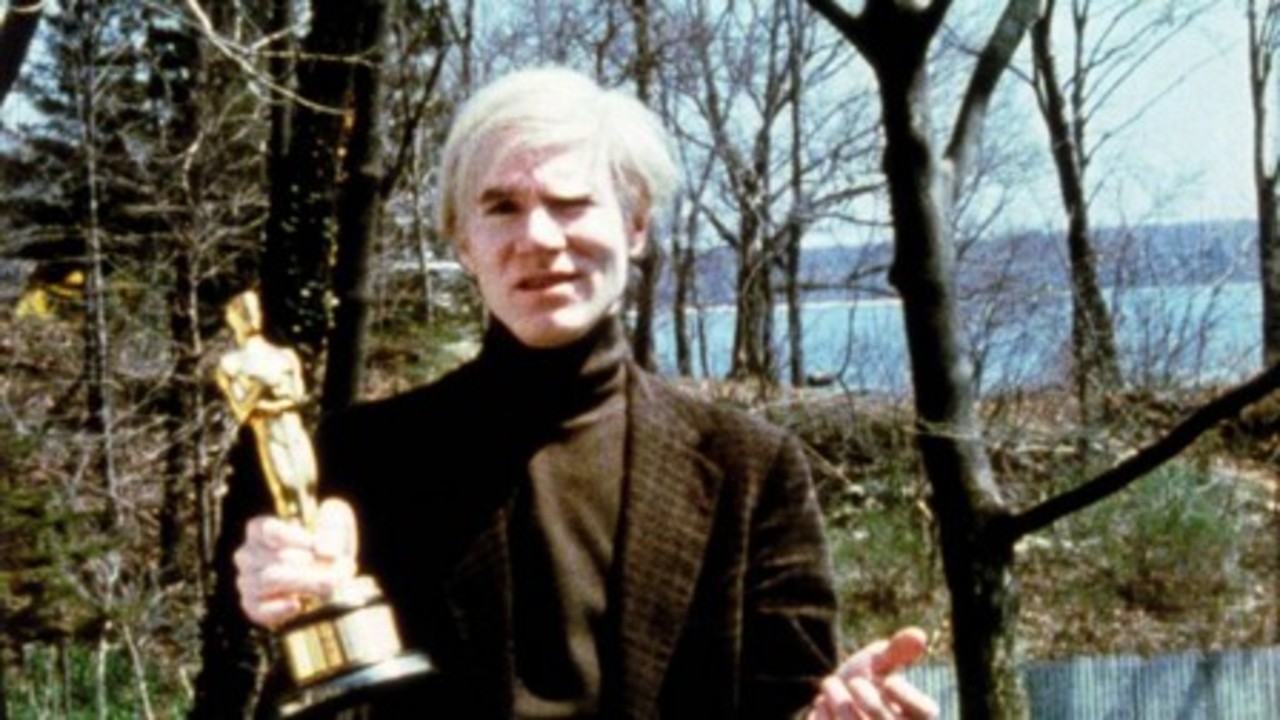The pioneering film diarist Jonas Mekas’s 38-minute (anti-) documentary on Andy Warhol captures the artist and his sizeable entourage from 1966 until 1982, offering an impossibly intimate glimpse into the underpasses of the artist’s life and career. Mekas and Warhol first became acquainted through actress Naomi Levine at a party, at which point Mekas realized that Warhol had been a regular at the screening nights held in his Manhattan loft—“it was the same white-haired guy who had come to sit on the floor and watch my films,” Mekas told The Guardian in 2012. Mekas’s images—created out of “necessity, not artistry” as instruments of tireless preservation—greatly influenced Warhol’s own screen practices. In 1966, the pair collaborated on Empire, Warhol’s 8-hour silent film consisting of a slowed, stationary shot of the Empire State Building, filmed by Mekas.
The vicennial breadth of Scenes from the Life of Andy Warhol (1982) catalogs much of Warhol’s New York—a galvanic art scene featuring his troupe of attractive bohemians—and several professional highlights: The Velvet Underground’s first public appearance at a New York Psychiatrist’s Convention; his 1971 Whitney Museum retrospective featuring blushing cows and Brillo Boxes; scenes at The Factory where his paintings Hammer and Sickle (1976), Skulls (1976), and the album cover for Paul Anka’s The Painter (1976) can be seen in the background; and a photoshoot where Evelyn Kuhn poses for Warhol in his studio. Viewers can also catch glimpses of John Lennon, Yoko Ono, Allen Ginsberg, Mick Jagger, and Lou Reed at various gatherings, as well as Warhol’s art world contemporaries Stephen Shore, George Maciunas, Peter Beard, and Jane Holzer.
More imprinting than the sparkle of Warhol’s New York is the way that Mekas’s haptic diaries manage a tenderness—brisk observations of days spent at Montauk beaches (with Warhol still in a turtleneck), hikes, and candlelit dinners. Mekas silently observes Warhol gifting ornate brooches, reloading his polaroid, laughing and sloping over couches, and toying with his friends’ Oscar statuettes. There is a clean split between the togetherness of these domestic sequences and Warhol’s exhibitions, which encourage subtle paradoxes of modern living; one prolonged shot observes a corner of the Whitney where Cow Wallpaper is touching a window, the uniform, shocking pink cows collocated beside moving traffic.
Intertitles at different moments read “THIS IS A DOCUMENTARY FILM” and “THIS IS NOT A DOCUMENTARY FILM,” collapsing the boundary between Warhol, the object-artist, and Warhol, the subject-soul. Perhaps the most affecting gesture of all is the final diary entry, where Mekas layers audio from Warhol’s funeral service at St. Patrick’s Cathedral overtop images of waves crashing against the Montauk shore.
CONTOURS is a column by Saffron Maeve examining films that thematize the world of visual art: heists, biopics, documentaries, and experimental fare. Maeve also programs a screening series of the same name and premise at Paradise Theatre in Toronto.
Scenes from the Life of Andy Warhol: Friendships and Intersections screens this afternoon, August 24, on a 16mm print at Metrograph as part of the series “In Concert.”



